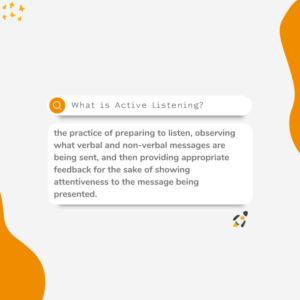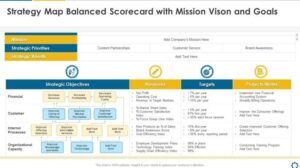
As Direct marketing copywriting takes center stage, this opening passage beckons readers into a world crafted with good knowledge, ensuring a reading experience that is both absorbing and distinctly original.
This type of copywriting plays a crucial role in capturing the attention of potential customers, driving engagement, and ultimately influencing purchasing decisions. With its focus on direct communication, it differs significantly from traditional marketing by emphasizing targeted messaging and measurable results.
Introduction to Direct Marketing Copywriting
Direct marketing copywriting is a specialized form of writing aimed at directly engaging the consumer, prompting them to take a specific action. Its significance in the business landscape cannot be overstated, as it creates personalized connections that can lead to increased sales and brand loyalty. Effective direct marketing copy consists of several key components: a powerful headline, engaging body copy, and a compelling call-to-action that encourages the reader to act immediately.
Unlike traditional marketing, which often relies on mass communication and broader outreach methods, direct marketing focuses on targeted messaging, allowing businesses to connect with specific audiences on a personal level.
Key Components of Effective Direct Marketing Copy

To craft effective direct marketing copy, one must focus on certain essential elements:
- Attention-Grabbing Headlines: A headline should instantly capture the reader’s attention and entice them to read more.
- Engaging Body Copy: This section should tell a story or present information that resonates with the audience, highlighting benefits and addressing pain points.
- Compelling Call-to-Action: Every piece of direct marketing copy should end with a clear call-to-action, guiding the reader on what to do next.
Difference Between Direct Marketing and Traditional Marketing Approaches
The distinction between direct marketing and traditional marketing is clear. Direct marketing is characterized by targeted communication directly to consumers, often using techniques like email campaigns, direct mail, and SMS marketing. On the other hand, traditional marketing approaches such as television and print advertising seek to reach a broader audience without personal engagement. This targeted nature of direct marketing allows for measurable results and personalized experiences that can greatly enhance customer relationships.
Techniques for Effective Copywriting
Persuasive language is crucial in direct marketing copywriting as it encourages readers to connect emotionally and take action. Utilizing specific techniques can significantly enhance the effectiveness of the message.
Examples of Persuasive Language Used in Direct Marketing
Persuasive language often includes emotional triggers and powerful adjectives. For instance, phrases like “limited time offer” or “exclusive access” create urgency, prompting immediate action. Using testimonials and social proof can also bolster credibility, making the reader more inclined to respond positively.
Compelling Calls-to-Action in Direct Marketing Messages
Creating a compelling call-to-action (CTA) is essential for driving desired responses. A strong CTA should be:
- Clear and Direct: Use straightforward language that leaves no doubt about what the reader should do.
- Urgent: Encourage immediate action with phrases like “Act Now!” or “Don’t Miss Out!”
- Value-Oriented: Highlight the benefits of taking action, such as a discount or exclusive content.
Best Practices for Creating Attention-Grabbing Headlines
Headlines can make or break direct marketing campaigns. Best practices for crafting effective headlines include:
- Keep it Short: Aim for clarity and brevity to maintain reader interest.
- Use Numbers or Lists: Headlines that promise information (e.g., “5 Ways to Save”) often draw more attention.
- Incorporate s: Use relevant s to improve visibility and engagement.
Targeting the Right Audience
Identifying the right audience is critical for the success of any direct marketing campaign. Proper audience targeting ensures that the copy resonates and ultimately leads to conversions.
Techniques for Identifying and Segmenting Target Audiences
Effective audience identification involves analyzing demographics, psychographics, and buying behaviors. Techniques include:
- Market Research: Conduct surveys and analyze competitor strategies to understand your audience better.
- Customer Segmentation: Group consumers based on shared characteristics or behaviors to tailor messages.
- Data Analytics: Utilize analytics tools to track customer interactions and preferences.
Strategies for Tailoring Copy to Meet the Specific Needs of Different Audiences
Tailoring copy requires understanding the unique needs and preferences of each audience segment. Strategies include:
- Personalization: Address customers by name and customize offers based on their past interactions.
- Language Variation: Adjust language tone and style to resonate with different demographic groups.
- Problem-Solution Approach: Clearly Artikel how your product or service solves specific problems faced by each segment.
Framework for Testing and Refining Audience Targeting in Direct Marketing Campaigns

Testing and refining audience targeting should be an ongoing process:
- A/B Testing: Test different versions of your copy to see which resonates better with your audience.
- Feedback Loops: Collect feedback from your audience to understand their perceptions and preferences.
- Adjust Based on Data: Continuously analyze campaign data to refine targeting strategies.
The Role of Business Innovation in Direct Marketing
Innovation plays a crucial role in enhancing direct marketing tactics. By adopting fresh ideas, businesses can stand out in a crowded marketplace.
Innovative Ideas that Enhance Direct Marketing Tactics
Innovative direct marketing can involve unique approaches, such as:
- Interactive Content: Use quizzes, polls, or interactive videos to engage audiences.
- Augmented Reality: Incorporate AR experiences in campaigns to offer immersive consumer experiences.
- Personalized Video Messages: Create video content tailored to specific customer segments.
Examples of Successful Direct Marketing Campaigns that Showcase Innovation
Several brands have successfully leveraged innovative direct marketing tactics. For example, a fitness brand might use personalized video messages to reach potential customers. This approach not only grabs attention but also creates a more personal connection, making recipients more likely to convert.
Comparison of Traditional Approaches to Direct Marketing with Innovative Strategies
Traditional direct marketing often relies on static messaging sent to broad audiences, while innovative strategies utilize advanced technologies and personalized content. This shift allows businesses to engage consumers on a deeper level, ultimately leading to better results and stronger brand loyalty.
Integrating Direct Marketing with Business Networking
Leveraging networking can significantly enhance a business’s direct marketing success. Building relationships is essential for credibility and reach.
Leveraging Networking for Direct Marketing Success
Networking opens up valuable opportunities for collaboration and outreach. Strategies for leveraging networking include:
- Attending Industry Events: Use conferences and networking events to connect with potential partners and customers.
- Building Strategic Relationships: Collaborate with complementary businesses to expand your marketing reach.
- Using Social Media: Engage actively on professional networks like LinkedIn to build connections and share insights.
Importance of Building Relationships in Direct Marketing Efforts
Building strong relationships with customers and partners fosters trust and loyalty. When consumers feel connected to a brand, they are more likely to respond to direct marketing efforts and advocate for the brand in their networks.
Creating Effective Partnerships that Enhance Direct Marketing Reach
Creating partnerships can help amplify marketing efforts. Consider approaches like:
- Co-Branding Initiatives: Collaborate on campaigns that leverage both brands’ strengths to reach a wider audience.
- Referral Programs: Develop programs that incentivize existing customers to refer new clients.
- Joint Events: Host events with partner brands to draw in larger crowds and share marketing resources.
The Impact of Technology on Direct Marketing
Technology plays a pivotal role in shaping direct marketing strategies, allowing businesses to refine their copywriting through innovative tools and data analytics.
Technological Tools that Improve Direct Marketing Copywriting
Several technological tools can enhance direct marketing efforts:
- Email Marketing Platforms: Services like Mailchimp automate campaigns and tailor messages for specific audiences.
- Content Management Systems: Platforms such as WordPress help streamline content creation and distribution.
- Analytics Software: Tools like Google Analytics allow for tracking customer behavior and refining strategies based on data.
Data Analytics Informing Copywriting Strategies
Data analytics provides insights that can significantly inform and enhance copywriting strategies. By analyzing customer behavior, businesses can identify what resonates with their audience, allowing for more tailored and effective messaging. This data-driven approach ensures that campaigns are not only creative but also grounded in real consumer insights.
Influence of Social Media Platforms on Direct Marketing Efforts
Social media platforms have transformed direct marketing by providing channels for direct engagement with consumers. Businesses can leverage platforms like Facebook and Instagram to convey messages, share promotions, and interact with their audience in real time. This immediacy and interactivity make social media a vital component of direct marketing strategies.
Direct Marketing in the Restaurant Industry
The restaurant sector presents unique opportunities and challenges for direct marketing, requiring tailored strategies to effectively reach customers.
Effective Direct Marketing Tactics Specific to the Restaurant Sector
Restaurants can utilize various direct marketing tactics, such as:
- Exclusive Offers: Send targeted promotions or discounts to loyal customers via email or SMS.
- Social Media Engagement: Use platforms to showcase menu items and engage with diners through polls or contests.
- Local Strategies: Optimize online presence to attract local customers searching for dining options.
Case Studies of Restaurants that Successfully Utilize Direct Marketing
Several restaurants have effectively leveraged direct marketing. For instance, a local pizzeria might use social media to promote a special deal, reaching a targeted audience that has previously engaged with their content. This audience-centric approach not only boosts sales but also fosters a sense of community around the brand.
Role of Customer Feedback in Shaping Direct Marketing Efforts for Restaurants
Customer feedback serves as a vital tool for refining direct marketing strategies. By actively soliciting and responding to feedback, restaurants can better understand their audience’s preferences and adjust their marketing messages accordingly. This responsiveness not only improves customer satisfaction but also enhances loyalty.
Best Practices for Business Presentations
Incorporating direct marketing principles into business presentations can significantly enhance engagement and effectiveness.
Key Elements of an Engaging Business Presentation
A successful presentation should include:
- Clear Objectives: Define the goal of the presentation and align content with the audience’s needs.
- Compelling Storytelling: Use narratives to connect emotionally with the audience and illustrate key points.
- Visual Aids: Incorporate graphics, charts, and visuals to enhance understanding and retention.
Importance of Storytelling in Enhancing Effectiveness of Presentations
Storytelling is a powerful tool in presentations as it creates an emotional connection with the audience. By structuring the presentation as a narrative, speakers can engage listeners more effectively, making complex information more relatable and memorable.
Tips for Designing Visually Appealing Presentation Materials
To create visually appealing presentation materials:
- Consistent Branding: Use consistent colors, fonts, and logos that reflect the brand identity.
- Minimal Text: Limit text on slides to key points, using visuals to convey additional information.
- Engaging Layouts: Utilize a variety of layouts to maintain visual interest and highlight important content.
Developing a Direct Marketing Strategy for Small Businesses
Small businesses face unique challenges in direct marketing, necessitating tailored strategies for effectiveness.
Step-by-Step Guide for Small Businesses to Develop Effective Direct Marketing Strategies
Developing a direct marketing strategy involves several crucial steps:
- Identify Target Audience: Understand who your ideal customers are and segment them appropriately.
- Set Clear Goals: Define what you hope to achieve with your direct marketing efforts, such as increased sales or brand awareness.
- Choose Communication Channels: Determine the best channels to reach your audience, whether through email, social media, or direct mail.
- Create Compelling Content: Develop targeted messaging that speaks to the needs and desires of your audience.
- Monitor and Adjust: Continuously track campaign performance and make adjustments based on data and feedback.
Unique Challenges Small Businesses Face in Direct Marketing and How to Overcome Them
Small businesses often contend with limited budgets and resources, making effective direct marketing challenging. Strategies to overcome these challenges include:
- Leverage Local : Optimize online presence to reach local customers without significant expenditure.
- Utilize Cost-effective Digital Marketing: Employ social media and email marketing to reach audiences efficiently.
- Build Community Relationships: Foster connections with local organizations to enhance visibility and trust.
Success Stories of Small Businesses that Excel in Direct Marketing
Many small businesses have successfully implemented direct marketing strategies. For example, a local bakery might utilize social media to showcase daily specials and engage with customers, leading to increased foot traffic and sales. These success stories illustrate the potential of effective direct marketing, even for businesses with limited resources.
Future Trends in Direct Marketing Copywriting
The landscape of direct marketing copywriting is continually evolving, influenced by emerging trends and technologies.
Emerging Trends that Will Shape the Future of Direct Marketing Copywriting
Several trends are expected to influence direct marketing copywriting in the coming years:
- Personalization at Scale: Expect greater emphasis on personalizing messages for individual consumers using advanced data analytics.
- Interactive Content: More brands will adopt interactive formats, such as quizzes and polls, to engage consumers.
- AI and Automation: The use of AI in copywriting will increase, allowing for more efficient content creation and optimization.
Potential Impact of Artificial Intelligence on Direct Marketing Strategies
Artificial intelligence is poised to revolutionize direct marketing strategies by enabling more personalized and data-driven approaches. AI can help analyze consumer behavior, optimize messaging, and automate content creation, thus enhancing efficiency and effectiveness in campaigns.
How Changing Consumer Behaviors Affect Direct Marketing Approaches
As consumer behaviors evolve, so too must direct marketing strategies. Increased demand for personalized experiences, transparency, and ethical practices will shape future marketing approaches. Businesses must adapt to these changing expectations to maintain relevance and foster consumer trust.
Epilogue
In summary, direct marketing copywriting is not just about creating compelling text; it’s about understanding audiences, leveraging innovative strategies, and effectively integrating technology. As businesses adapt to the evolving landscape, mastering these elements will be key to achieving marketing success.
FAQ
What is the main goal of direct marketing copywriting?
The main goal is to persuade potential customers to take a specific action, such as making a purchase or signing up for a newsletter.
How can I measure the success of my direct marketing copy?
Success can be measured through responses such as click-through rates, conversion rates, and overall sales generated from the campaign.
What are some common mistakes in direct marketing copywriting?
Common mistakes include vague messaging, lack of a clear call-to-action, and failing to segment the audience properly.
How often should I update my direct marketing copy?
It’s advisable to review and refresh your copy regularly based on performance metrics and changing market conditions.
Can direct marketing copywriting be effective for small businesses?
Absolutely! Small businesses can benefit greatly from targeted direct marketing strategies that resonate with their specific audience.




